Driving along a Pennsylvanian country road during the months of May or June, you are likely to see some patches of tall white, pink or violet flowers, called Dame’s Rocket or Dame’s Violet.
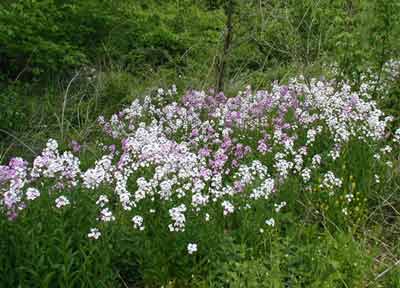
The flowers of Dame’s Rocket, Hesperis matronalis, cluster at the top of one to three feet tall stems. Blooms with four petals that eventually give rise to erect seedpods indicate this garden escape is a member of the mustard family. Phlox spp. are similar in appearance although the flowers have five petals and you would most likely find phlox blooming in a wooded area.
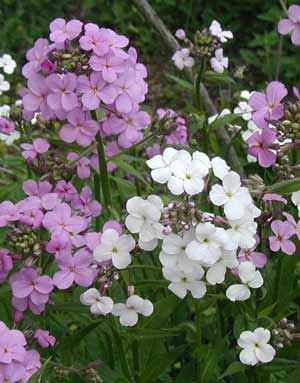
The white blossoms may have a tinge of pink or purple and some flowers are variegated. The stamens and style are retained mostly in the flower tube.
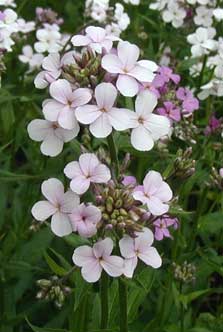
A few small flower clusters project from the leaf axils. Finely toothed leaves attach directly to the hairy, stiff stem.
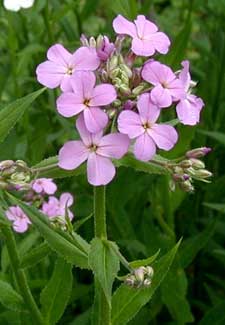
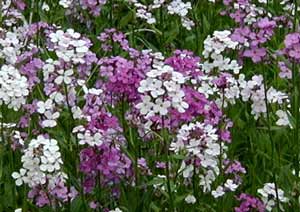
Great write up – have been curious about this flower for a long time. Thanks!
Hey Mike –
The Dame’s Rocket is blooming wildly right now – at least in our part of PA! The pinks and purples and white flowers alongside the roads and highways are really beautiful. So nice for a roadside weed, isn’t it?
Thanks for stopping by and come back again.
…and it has a wonderful scent–almost like cinnamon
Yes! I was driving around in the country just the other day with the windows down and wondered what was that great smell. I looked around for privet bushes in bloom but saw the Dame’s Rocket in bloom and knew it was them. That nice scent definitely brought a smile to my face! 🙂
Thanks for chiming in, Kate!
Dame’s Rocket is as bad of an invasive as garlic mustard. As a professional conservationist, I see first hand how it damages ecosystems in the midwest and elsewhere. Very pretty but keep in mind how much effort and money is being spent to control this invasive. Looks can be very decieving! Please stop gardening with this plant!
Hey S. Long,
Is it warranted to spend any money and effort to attempt to remove a plant that was moved to North America way back in the 17th century (according to Wikipedia)? That’s a serious question I have about conservation efforts in general. If a state warrants the removal efforts are worth it but an adjacent state does not, isn’t it a little futile to do so? You must be maddened at times over these situations!
What native species has this prolific mustard replaced? Haven’t any butterflies or other insects come to use it over the centuries? I was in a meadow in southern New York this past weekend and the view was outrageously beautiful due to the plethora of Dames Rocket in bloom. I can see how the plant is very invasive, but I still wonder at the actual damage it’s causing. Any comments from the professional?
I would absolutely LOVE to know what the damage is these plants are causing because they are stunning and the butterflies seem to love them. We’re getting ready to buy our 1st home and I was considering planting them in my yard. Please someone tell me why it would be bad for me to do so. Thank you.
Hi Alisha!
Some non-native plants surely are invasive and to be shunned, like the multiflora rose which is taking over part of our lane, but I’m with you on this one. I love seeing the Dame’s Rocket in bloom along our roadways in May. The colors are delightful and it doesn’t seem to be so invasive as to smother out existing plants.
The main caution to take is to verify it is not illegal in your location to transport or plant them. If you’re in the U.S. check the link to the USDA for federal and state invasive plants in my Invasive Plants in PA post.
Also, realize that if you do plant them you may have the Dame’s Rocket popping up everywhere the future years. Remember, a weed is any plant that’s growing where you don’t want it!